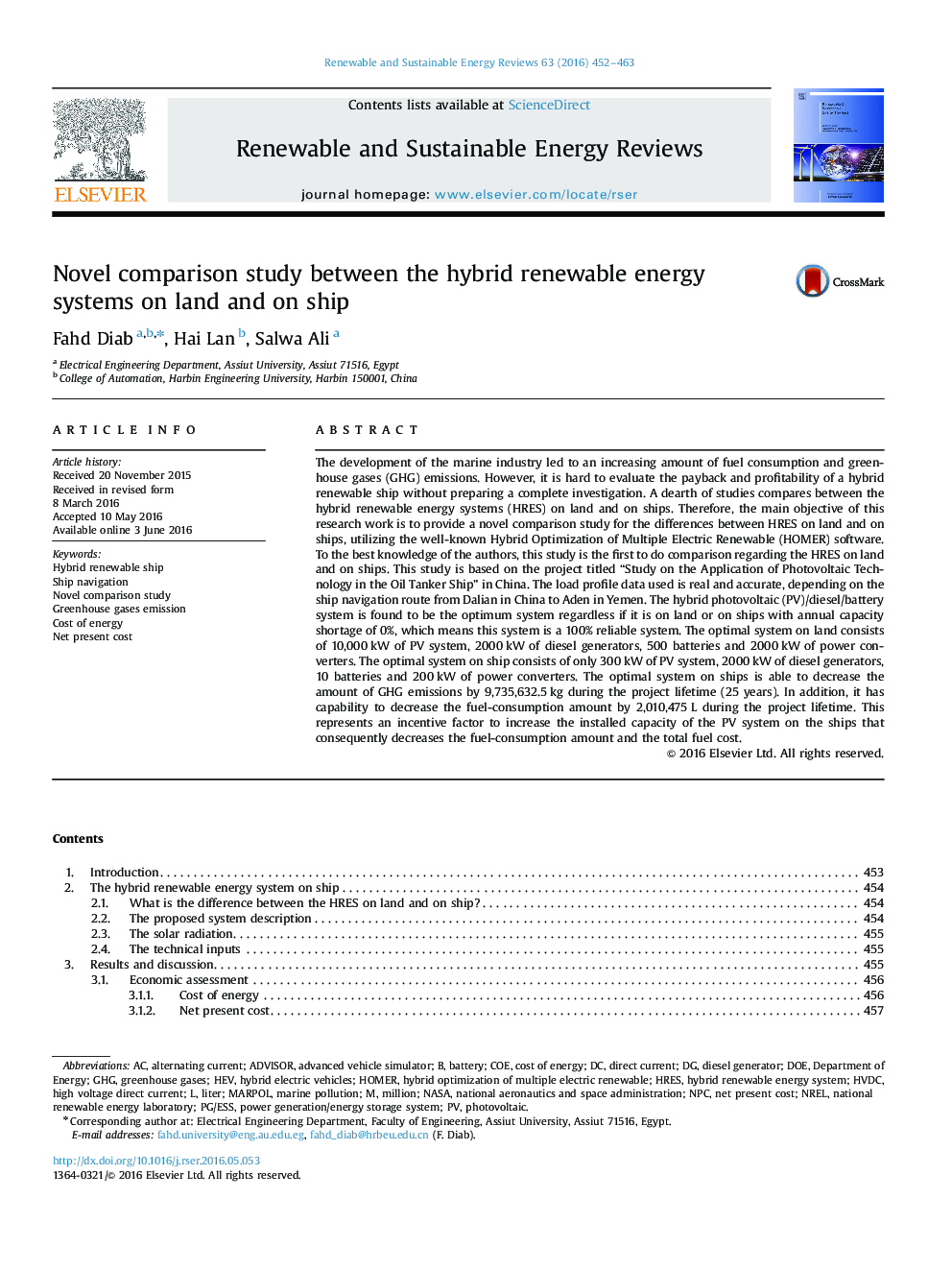| کد مقاله | کد نشریه | سال انتشار | مقاله انگلیسی | نسخه تمام متن |
|---|---|---|---|---|
| 8113353 | 1522322 | 2016 | 12 صفحه PDF | دانلود رایگان |
عنوان انگلیسی مقاله ISI
Novel comparison study between the hybrid renewable energy systems on land and on ship
ترجمه فارسی عنوان
مطالعه مقایسه ای بین سیستم های انرژی تجدید پذیر ترکیبی در زمین و کشتی
دانلود مقاله + سفارش ترجمه
دانلود مقاله ISI انگلیسی
رایگان برای ایرانیان
کلمات کلیدی
DOEGHGHEVNRELHREsNPCMARPOLHVDCNational Renewable Energy Laboratory - آزمایشگاه ملی انرژی تجدید پذیرMarine pollution - آلودگی اقیانوس، آلودگی دریاییgreenhouse gases emission - انتشار گازهای گلخانه ایBattery - باتریAlternating current - جریان متناوبDirect Current - جریان مستقیمhigh voltage direct current - جریان مستقیم ولتاژ بالاnational aeronautics and space administration - سازمان ملی هوانوردی و فضاییHybrid renewable energy system - سیستم انرژی تجدید پذیر ترکیبیliter - لیترAdvisor - مشاورmillion - میلیونNASA - ناساship navigation - ناوبری کشتیCost of energy - هزینه انرژیNet present cost - هزینه خالص فعلیCoe - همHomer - هومرDepartment of Energy - وزارت انرژیHybrid electric vehicles - وسایل نقلیه هیبریدیDiesel generator - ژنراتور دیزلیGreenhouse gases - گازهای گلخانه ای
موضوعات مرتبط
مهندسی و علوم پایه
مهندسی انرژی
انرژی های تجدید پذیر، توسعه پایدار و محیط زیست
چکیده انگلیسی
The development of the marine industry led to an increasing amount of fuel consumption and greenhouse gases (GHG) emissions. However, it is hard to evaluate the payback and profitability of a hybrid renewable ship without preparing a complete investigation. A dearth of studies compares between the hybrid renewable energy systems (HRES) on land and on ships. Therefore, the main objective of this research work is to provide a novel comparison study for the differences between HRES on land and on ships, utilizing the well-known Hybrid Optimization of Multiple Electric Renewable (HOMER) software. To the best knowledge of the authors, this study is the first to do comparison regarding the HRES on land and on ships. This study is based on the project titled “Study on the Application of Photovoltaic Technology in the Oil Tanker Ship” in China. The load profile data used is real and accurate, depending on the ship navigation route from Dalian in China to Aden in Yemen. The hybrid photovoltaic (PV)/diesel/battery system is found to be the optimum system regardless if it is on land or on ships with annual capacity shortage of 0%, which means this system is a 100% reliable system. The optimal system on land consists of 10,000Â kW of PV system, 2000Â kW of diesel generators, 500 batteries and 2000Â kW of power converters. The optimal system on ship consists of only 300Â kW of PV system, 2000Â kW of diesel generators, 10 batteries and 200Â kW of power converters. The optimal system on ships is able to decrease the amount of GHG emissions by 9,735,632.5Â kg during the project lifetime (25 years). In addition, it has capability to decrease the fuel-consumption amount by 2,010,475Â L during the project lifetime. This represents an incentive factor to increase the installed capacity of the PV system on the ships that consequently decreases the fuel-consumption amount and the total fuel cost.
ناشر
Database: Elsevier - ScienceDirect (ساینس دایرکت)
Journal: Renewable and Sustainable Energy Reviews - Volume 63, September 2016, Pages 452-463
Journal: Renewable and Sustainable Energy Reviews - Volume 63, September 2016, Pages 452-463
نویسندگان
Fahd Diab, Hai Lan, Salwa Ali,
